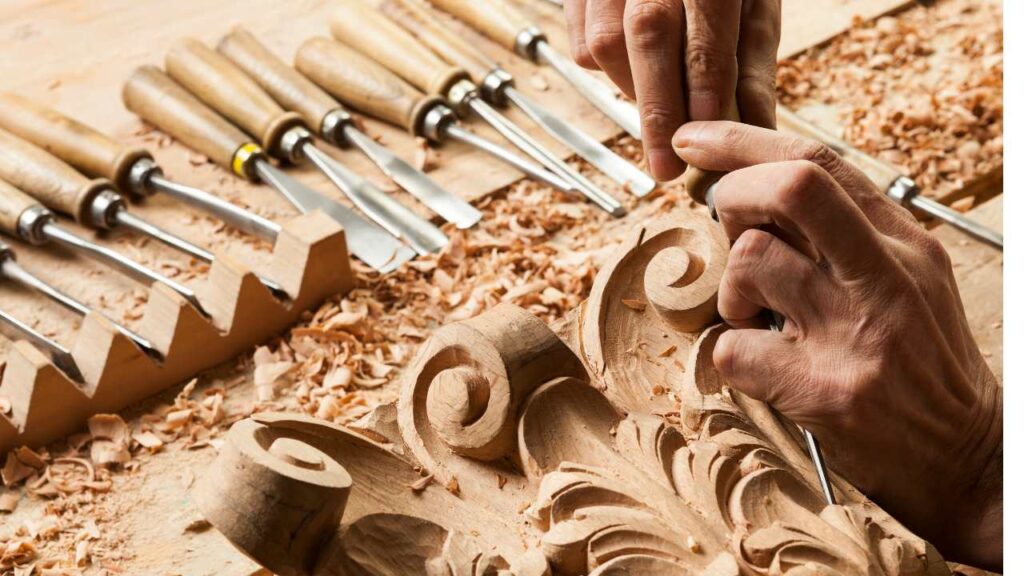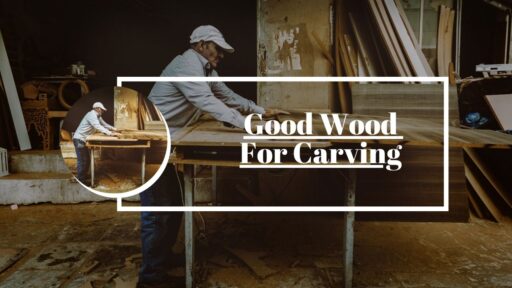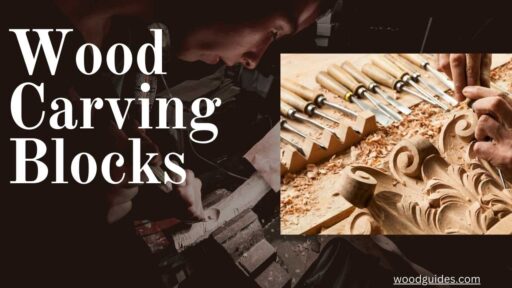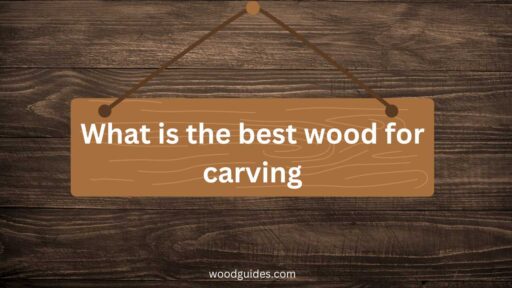Explore a wide range of premium Good Wood For Carving on our website. Choose from various types of high-quality wood for your carving needs.
Wood carving as an art is ancient; it is a craft that shapes and transforms wood’s inherent beauty by the hand of the carver. As I immerse myself in this stunning arena, I am reminded of the distinct connection between artist and material. The kind of wood chosen is more than a medium; it serves as the basis for aesthetics, durability, and workability in art. Therefore, choosing the right Good Wood For Carving is not only an aesthetic choice but also an important step in artistic development.
Familiarity with Good Wood For Carving
When I started doing wood carving, I couldn’t help but be astonished to see how a piece of simple wood could be turned into something extraordinary. Each chip or shave seemed like it was telling me a hidden story and gave life to my imagination. The scent of fresh timber and tactile satisfaction from molding something with my hands was different from any other form of art that I knew before.
But every experienced carver would say that you should start by understanding your material first. Wood carving does not only consist of technique but rather knowledge about your chosen wooden medium too. Different species have their own qualities, ranging from grain patterns to hardness, which either makes or breaks the carving process.
Factors to consider when selecting Good Wood For Carving
In getting good woods for carvings, I have realized there are many things to look at. One such factor is the grain pattern, which can affect how easily or hard your woodworking tools cut through or shape them into desired designs. Straight fine grain is commonly preferred because it has less resistance and leaves smoother finish than dense coarse grain (Mace 36). The hardness of the timber counts, too; materials that are gentle encourage novices’ experience, whereas harder types resist efforts but produce intricate outcomes (Freeman 68).
Moisture content matters; overly dry wood may cause splitting or cracks, while very wet ones tend to warp as they dry out (Price & Price 34). Moreover, natural color and the possibility of finishing a wood may affect the visual appeal of a final carving.

credit: www.pexels.com
Softwoods for carving
The first choice for many other carvers and myself is softwood when starting off with a new project. It’s not only more accessible but also more forgiving for tool users who are still mastering their tools. Softwoods usually have loose grain structures that make them easy to cut through or shape (Lammers 45). Carving softwood, I love how it requires a light touch and gives a smooth cutting experience, which is especially good when dealing with bigger-sized pieces or aiming at quick roughing out on a shape.
However, working on softwoods can sometimes be delicate, too. Some areas are surprisingly hard or soft due to differences in density, resulting in an uneven surface after carving. Knots also pose a challenge in this timber; as such, they often cause deviation from normal grain direction, which calls for careful manipulation of your carving tools (Lammers 48).
But then again, these difficulties notwithstanding, softwoods offer great advantages, too. They facilitate fast improvement and lend themselves well to trial-and-error approaches. Carvings done with soft wood often possess casual and rustic looks that go well with certain designs.
Hardwoods for carving
Transitioning into hardwoods was a critical milestone in my carving journey. Hardwoods like oak, walnut, and maple offer a denser grain structure that allows them to hold fine details much better than softwoods. Being long-lasting makes these woods ideal for carvings that are meant to be cherished.
Anyway, I find this aspect of hardwoods most enjoyable: the range of colors and grain patterns available. From deep brown hues in walnut to light cream shades in birch, hardwoods provide a natural palette that enhances the visual impact of a carving without using stains or paints.
Exotic woods for carving
Outside traditional softwoods and hardwoods is the world of exotic woods. The specimens are usually from tropical regions and may have different colors, textures, or grains. Mahogany, teakwood, or rosewood, for instance, have been used since time immemorial due to their beauty and ease of working with them when one wants to shape something out of wood. I always feel enriched by the richness found within exotic woods whenever I use them as they transform an ordinary piece into an art.
However, exotic woods can be harder to source and might come at a higher price but the results are often worth it even if it means saving up more money just buy such materials again—since most tropical oils contribute towards finishing products giving off highly polished surface hence increasing life expectancy especially on an outdoor object.
But nonetheless when one uses it he or she must bear in mind that there is need for respecting both the environment around us thus maintainable importation policies should be put into consideration while importing such beautiful things made out of trees native only some places on earth which leaves our forests endangered.
Best wood for beginners
As far as beginners are concerned, good carving wood should be what can easily forgive mistakes made during shaping processes. Basswood is often recommended for people who are starting out because it has a very small grain size as well as uniform surfaces. Although it is soft to make carving easy, one can still achieve good details on the material. When I was first learning how to carve, I found that basswood allowed me to spend more time working on techniques instead of fighting against the wood.
Another good option for beginners is butternut. It’s slightly harder than basswood but still soft enough to carve easily. Besides, its cooler is light and grain pattern such that novice carvers usually prefer it since they are able to see cuts and advancement clearly.
When beginning, I advise fellow beginners to choose woods that are readily available and affordable so they can practice without concern over the cost or rarity of the material. Over time, as skills develop, one can explore other types of wood and more challenging projects.
Best wood for intricate details
The best type of Good Wood For Carving fine details depends entirely on your level of experience as well as what you want to achieve in your design. Here’s a look at some top contenders:
For Beginners
Basswood (Also known as Linden): This is widely regarded as the beginning woodcarver’s king. It is extremely soft, so can be easily worked with hand tools and it is forgiving when mistakes are made. Basswood carves smoothly, producing a clean finish, thus excellent for practicing detail work.
For More Experienced Carvers
Butternut: Harder than basswood but not too difficult to cut into finer details properly. Butternut carves with little resistance and holds fine detail well making more complex projects easier to complete.
White Ash: A hard wood that has light coloration and tight grain is white ash. Though harder than softer options, it retains details excellently and has very smooth surface which favors crisp features.
For Luxury Carving
Black Walnut: This beautiful wood comes in dark chocolate color and amazing grain patterns. Black walnut takes details incredibly well even though it poses difficulties due to its hardness, hence making masterpieces like nothing else.
Additional Considerations
Western Red Cedar: This is for those who prefer a slightly fragrant timber option. It is relatively soft and good for carving, although there may be instances of splitting.
Cherry: This particular hardwood has a reddish-brown tint to it that nicely balances between being tough enough to hold detailed work or not. Therefore cherry can either be carved by use of hand or power with ease depending on what type of project one intends to do.
Remember
The best wood for you depends on your specific project and skill level. Therefore, before choosing any woods that will end up being used in a piece requiring intricate carving techniques, research about their properties is important.
Best wood for large-scale projects
Wood selection matters most when working on large-scale projects. It ought to be strong enough for structural support yet malleable enough for shaping on a larger scale. Softwoods like cedar and redwood are popular choices because they have low densities that allow them to be removed easily. Also, Cedar has a natural resistance to decay besides being used to make outdoor sculptures.
Also, I must think about the weight of the wood when handling larger works. Conversely, light woods make final pieces easier to move and install. Poplar can be a good option for indoor large-scale carvings. It has low density as it is light and relatively soft with straight grain which makes it easier in working at a grand scale.
Wood movement causes cracks and splits over time in large carvings due to a lack of stability. To allow for making big works without any concerns regarding the wood’s warping or changing shape during temperature changes and humidity, one can laminate multiple pieces together.
Sustainable wood options for carving
With growing popularity of woodcarving comes increased demand for sustainable sources of timber. As such; we have a duty as carvers to ensure that our choice of woods do not contribute towards deforestation or environmental destruction. Woods certified by the Forest Stewardship Council (FSC) are socially responsible choices because they indicate that environmentally friendly methods were used in harvesting them.
Reclaimed wood is another sustainable option that I’ve explored. This may come from old furniture, buildings that have been demolished, or even driftwood. Apart from preventing waste this also gives such carving unique history and character quite often.
Bamboo is technically categorized as a type of grass, but that does not make it any less of a highly sustainable source for carving purposes. This is because it grows very quickly and does not need to be replant,ed thus making it an eco-friendly option. As a woodcarving medium, its unique grain and good workability make it ideal, especially in the carvings of more recent times that are abstract.
Frequently Asked Questions
Over time, different questions have been asked by my fellow carvers and enthusiasts regarding the selection of Good Wood For Carving. Here are some of them:
Can any type of timber be used for carving?
Technically, yes, but some timbers are better than others due to their grain hardness or workability.
How can you tell if the wood is too dry for carving?
If the wood is too dry, then chisel marks will chip out easily. Also when tapped on a piece of hard wood creates a hollow sound.
What is the best way to preserve a wood carving?
Regular maintenance is also key. Proper finishing with oils or sealants can protect the wood from moisture and UV damage.
How do I prevent my carving from splitting as it dries?
Avoid exposing the carving to rapid temperature or humidity changes; carve seasoned timber.
Conclusion – Good Wood For Carving
Finding the perfect wood for your Good Wood For Carving projects entails patience, studying, and a learning experience. Hence, whether you are an amateur carver or an expert, this information will help you understand what each kind of tree offers. This includes factors like grain direction, hardness, and sustainability levels, among other things that should influence your choice of working material. Successful creation will require embracing this often frustrating process while being led by the natural beauty found within each piece rather than forcing designs onto raw materials in order to fit our preconceived ideas about what they ought to be.





